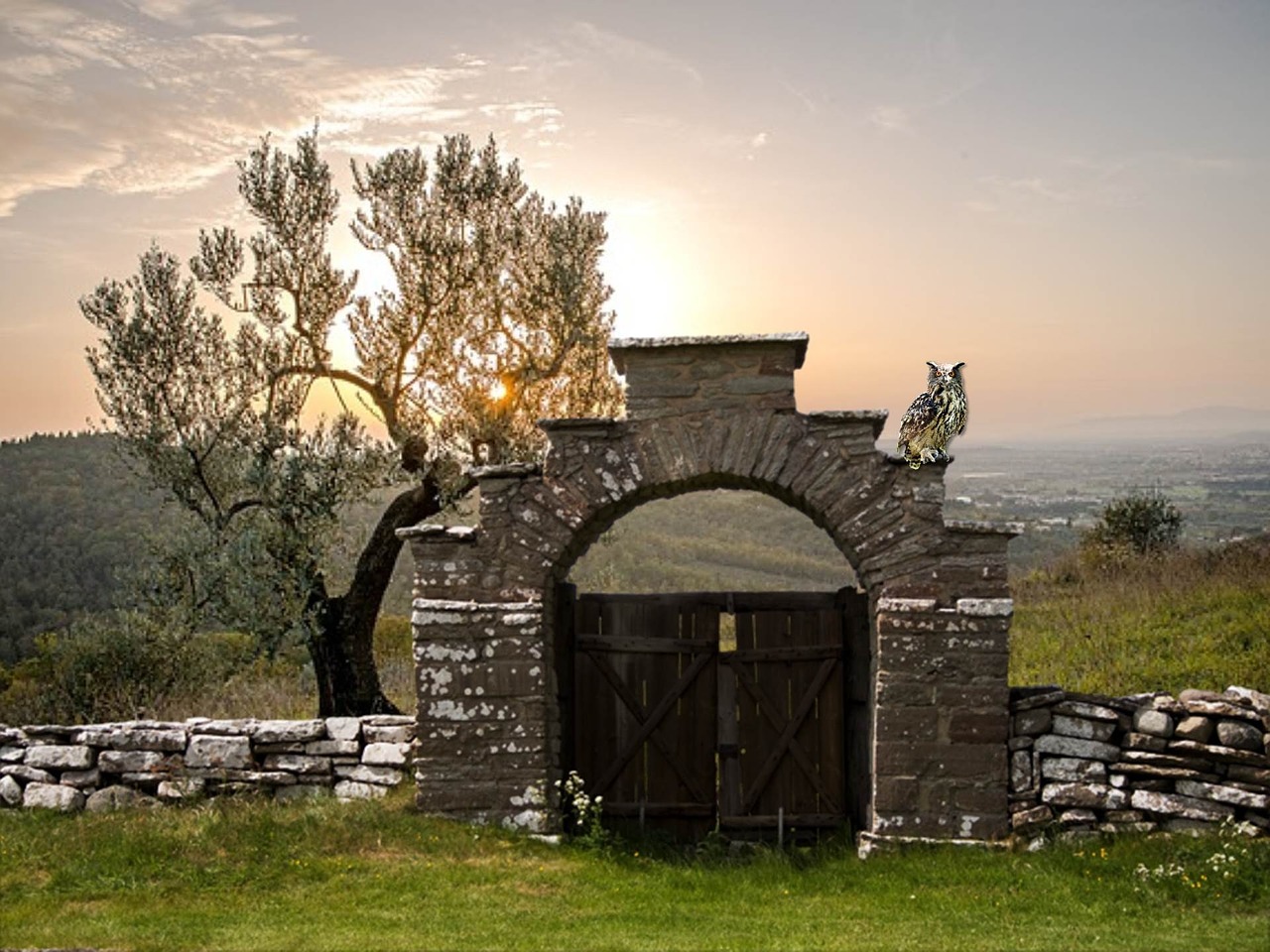
Martin Goodson
The Great Rohatsu Sesshin
Exercises in Mindfulness
The commemoration of the Buddha's Enlightenment runs from 1st to the morning of 8th December in the NE Buddhist tradition. It is a time of intensive training in the Zen monasteries with lay practitioners invited to join in with the spirit of the occasion either at a temple or at home.

Landscape, by Kabaldesch0
CC0 Public Domain, from Pixabay.com
From 1st December to the morning of 8th, in Chan/Zen monasteries and temples around the world monks (men and women) & laity will be taking part in Rohatsu.
This is the commemoration of the Buddha’s Enlightenment. For the past few weeks, we have been featuring a re-telling of the Buddha’s life up to the moment when on the morning of 8th December (in the NE Buddhist tradition) he looked up into the clear morning and upon the sense impact of seeing the morning star awoke from the dream of samsara and became The Awakened One - The Buddha.
In the southern tradition, in equatorial latitudes, this is remembered at the time of the full moon in May - the full moon iconographically symbolising the Enlightened Heart. However, in northern climes where there is more variation in light and dark between summer and winter, this remembrance takes place nearer the Winter solstice when the days turn over from their descent into the dark and reach, once more, towards the light.
The Rohatsu sesshin (Zen retreat), is a particularly gruelling one, where the monks have little sleep and what sleep they get is taken sitting on their cushions; the tradition says they are not to lie down during this week. It finishes on the last day when a full day’s zazen continues into the night and does not stop until dawn approaches. It is then customary for the monks to go out, bleary eyed, and with a week’s growth on their chin, to see if they can see the morning star! The kitchens have been busy cooking up spicy noodles, which in the cold of the early December morning alleviate the chilled and aching bones, warming the hands too after the long effort.
So, at this time, the laity too are expected to make a little more effort in training. But are these periods of intense remembrance important?
There are two things to consider. One is that the Zen training, like training the body with exercise, needs periods of more and less intensity. It has been proven that for sports people high intensity interval training increases fitness more quickly and by a greater percentage than just performing the same routine without variation. It seems the change from low to high and high to low requires more effort and this translates into increased fitness. So it is too with the training. Although the Buddha may have abandoned the ascetic life, he certainly introduced periods of asceticism to the sangha in the form of retreats, and this practice has stuck in all the schools of Buddhist practice. Increasing practices of restraint, coupled with sitting and walking meditation, makes the place and time a tenemos - a sacred space - which in Buddhist parlance means emptying out a bit more of the notion of ‘I’ and re-connecting with that quiet spaciousness that is the true nature of Heart/Mind. It is here that the Heart’s Wisdom (prajñaparamita), is to be found.
The other reason is more subtle and has to do with how Heart/Mind (citta), is to be understood. To put it simply, in the Avatamsaka sutra the allegory of Indra’s jewelled net is used to show how each phenomenon, like the jewels in Indra’s net, reflects itself and everything else in the universe, past, present and future. As such, when we sit in commemoration of the Buddha’s sitting under the Bodhi Tree ,we partake in this moment of his sitting down too. Our small efforts become part of his effort which he undertook to be of assistance to all sentient beings. In this way, we begin to repay our debt of gratitude for the Buddha’s teachings by participating in such ritual acts of remembrance.
So, maybe looking to next week and starting on 1st December, we could decide in advance what extra effort we might make to dedicate ourselves to this important period in the Buddha’s story. Perhaps a longer zazen for those seven days, or getting up a bit earlier to light a candle and some incense and undertake some chanting for each day. Let our own heart-wisdom inform our efforts and in this way re-connect with something of the Buddha’s own Awakening.
Wishing everyone a good Rohatsu!




